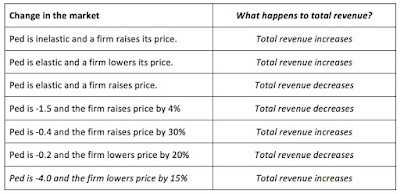03/04/16 UNIT 4: Open Market Operations
- Only small percent of your bank deposits is in the safe. The rest of your money has been loaned out. This is called "Fractional Reserve Banking."
- The FED sets the amount that banks must hold
- The reserve requirement (reserve ratio) is the percent of deposits that banks must hold in reserve and NOT loan out.
- When the FED increases the money supply (MS) it increases the amount of money held in the bank deposits.
1 - If there is a recession what should the FED do to the reserve requirement?
- Decrease reserve ratio
- banks hold less money and have more excess reserves (ER)
-banks create more money by loaning out excess
-money supply increases, interest falls, AD goes up.
2 - If there is inflation, what should the FED do to the reserve requirement?
-increase the reserve ration
-banks hold more money and have less excess reserves
-banks create less money
-money supply decreases, interest rates increases, AD goes down.
#2) The Discount Rate
- The interest rate that the FED charges commercial banks.
EX.
- if Bank of America needs $10 million, they borrow it from the US Treasury, but they must pay it back with interest
To increase the money supply, the FED should DECREASE the discount rate (easy money policy)
To decrease the money supply, the FED should INCREASE the discount rate (tight money policy)

#3) Open Market Operations (OMO)
the FED buys/sells government bonds (securities)
this is the most important and widely used monetary policy
To increase the money supply, the FED should BUY government securities.
To decrease the money supply, the FED should SELL government securities.
Federal Funds Rate - FDIC member banks loan each other overnight loans
Prime Rate - interest rate that banks give to their most credit worthy customers
*When a customer deposits or withdraws cash from their account (check-able) it has no effect on money supply.
It Only Changes:
composition of money
excess reserves
required reserves
Single Bank
Loan from excess reserves (ER)
EX: Chase bank
Banking System
ER x Multiplier (total money supply)
EX: Chase, Wells Fargo, BOA

















